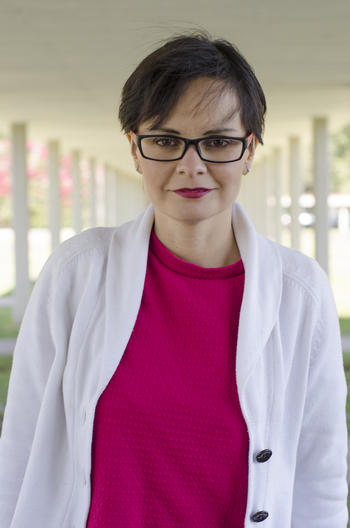Brenda Margarita Macías Sánchez

International Research Training Group "Between Spaces"
Movements, Actors and Representations of Globalisation
PhD Candidate
Project: "Prison theater space: platforms of mobilization of inmate-actors to retort to punitive power within the context of globalization, through Shakespeare’s King Richard III tragedy"
Academic Formation
|
2001-2005 |
Bachelor’s degree in Spanish Literature, Facultad de Ciencia, Educación y Humanidades, Universidad Autónoma de Coahuila (UAdeC) |
|
August 2010-December 2010 |
Internship in the Press and Democracy Program (Prende) Becaria del Programa Prensa y Democracia (Prende), Department of Communication, Universidad Iberoamericana (Ibero) |
|
2011-2013 |
Master’s degree in Communication, Ibero |
|
2015 to Present |
PhD Candidate, Latin American Studies Postgraduate Program, Universidad Nacional Autónoma de México (UNAM) |
Investigation Residency
|
2017 |
Investigation residency at Centro Cultural GAM, Santiago de Chile |
Theater Experience
|
2015 |
Dramaturgy workshop with Jaime Chabaud, UNAM. |
|
2004-2011 |
Experience acting, producing and directing stage plays and performance. |
|
2003 to Present |
Experience in journalism, radio, television and internet as a reporter, producer and presenter in several subjects, such as art, culture, immigration and energy. |
Professor Experience
|
2014-2015 |
Universidad Iberoamericana Law School Professor. Subject: Law and Communication. |
"Prison theater space: platforms of mobilization of inmate-actors to retort to punitive power within the context of globalization, through Shakespeare’s King Richard III tragedy. The cases of CoArtRe (Chile) and the Prison Theater Company (México)"
Supervisor: Dr. María Isabel Belausteguigoitia Rius (UNAM)
Among the representations of globalization in terms of safety and justice there is an increase of social inequity, violence and criminalization with a hyper-incarceration of people. In this context, research intends to emphasize the theater, performance, dramaturgy and the social elements that arise from prison and its continuance outside of prison.
What is the significance to the punitive system to burst into its domain to produce theater? What does it mean when theater in prison transcends lock up? The preliminary, the borderline, the interspace manifests itself in prison theater, which also, extends to the inmates, formed as actors, outside of prison.
In the boundaries of prison, institutional and social projects emerge, which attend a call of poetic urgency (Rivera Garza, 2015). In spite of the vicissitudes, some external art groups (civil associations, foundations and artists) set aside some of their time to have workshops with the people who experience a social stigma (Goffman, 2010). These individuals, do they undo prison? For what? Is this “interspace” some sort of “Mundo Zurdo”? (Anzaldúa, 2015)
What kind of expressions are voiced in this Lefty World of prison theater in Mexico City and Santiago de Chile, inside and outside of prison? Do we know the function of prison and society through prison theater? Is prison theater used as a position for criticism or are theater exercises a form of social reinsertion to obtain an early release from prison?
Being inmates and actors in prison keep these individuals at the edge of being in the inside and the outside. In other words, at the doorstep, on the border to interact with the ones inside and the ones outside, through the representation of William Shakespeare’s The Tragedy of King Richard III. Even when itineranty freedom is acquired, ex-convicts go back to prison theater because they can find a learning space there.
Prison theater flourishes as a stronghold to new pedagogies to unlearn what has been imposed by the dominant power (Walsh, 2014) because this invites to think from the crisis, because for a moment, it does interrupt the imprisonment machinery. It is like a yes, a maybe, a place beyond that invites us to think about the impossible and to take a stand about reality in the way of Brecht’s epic theater.
Publishing
|
2010 |
Dramaturgia Saltillense, El Grito de la Estatua, Municipio de Saltillo |




